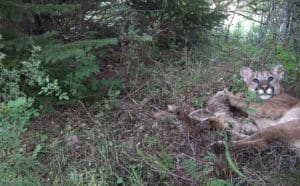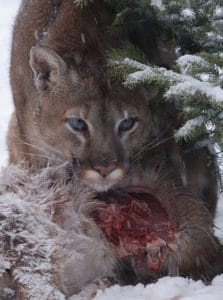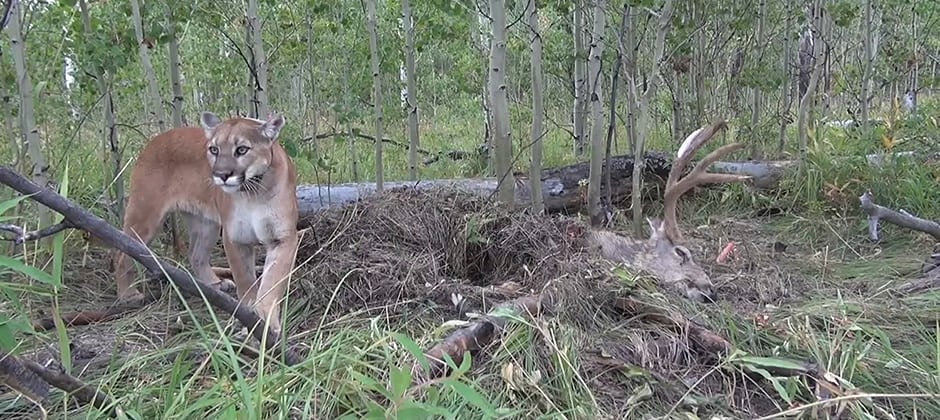Share this article
Mountain lions select specific spots to hunt primary prey
When pumas are going after their primary prey of black-tailed deer, they change the types of landscape they use, according to new research.
The discovery could be important for wildlife managers looking to protect mountain lion (Puma concolor) environments since the animals don’t always hunt and sleep in the same types of landscape. It could also inform what habitats are risky for black-tailed deer, which have experienced declines in some regions.
“Cougars really appear to be tracking where the deer are,” said Bogdan Cristescu, a postdoctoral ecology researcher at the University of California, Santa Cruz and the lead author of a study published recently in the Journal of Zoology.
He and his co-authors obtained more than 19,000 GPS locations from radio-collared pumas, which indicated 609 clusters of locations where the animals spent more time.

Pumas in Mendocino National Forest are specialized in hunting black-tailed deer. ©Mark Elbroch / Panthera
Once they identified these clusters, the co-authors and field technicians went out to investigate the areas for remains of any prey.
They visited 598 of the clusters and found black-tailed deer (Odocoileus hemionus columbianus) kills at nearly half of the cluster sites, and a further 64 which had evidence of other prey items — mostly rodents like California ground squirrels (Otospermophilus beecheyi) and rabbits, but also birds and carnivores such as raccoons (Procyon lotor) and foxes. Many of the remaining clusters didn’t have any evidence of a kill.
But they found that the landscape involved with these different types of kills differed greatly. Most of the deer kills happened in a very specific type of environment.
“They kill deer where the slopes are gentle and facing north,” Cristescu said, adding that mountain lions also sometimes like rugged areas and west-facing slopes to predate on deer. The researchers know that deer use these areas also, because they also have data taken from radio-collared black-tailed deer.
“It’s very interesting to see how this technology really allows a fine detail of understanding about how these animals operate,” he said.
But the places where cougars kill deer differ from where they kill other prey in Mendocino. Cristescu said that the landscapes they choose for hunting deer can differ from the places where they spend the rest of their time, which include shrubby areas or forests with lots of cover, with a general avoidance of open areas. Many of the other kills are found more randomly on the landscape, and likely happen when the cougars aren’t actively on the hunt.

Researchers used GPS trackers to find and identify puma kills in an effort to better understand what their main prey items are. ©Mark Elbroch / Panthera
“These cougars are opportunistic when it comes to alternative prey but their movements are really dictated by where the deer are,” he said.
Their findings also show that cougars select different environments in different seasons. Deer typically prefer lower elevations during the winter where the snow is less of an obstacle to getting around and to accessing their plant foods. Cristescu and his co-authors found that cougars follow them into the valleys during these periods. In the summer, the mountain lions and deer are found more on the ridges and mountain tops.
He adds that in other areas where more varied prey is found, the big cats might be more generalist, or could specialize on other types of prey. In these areas, similar studies would be necessary to determine whether cougars select different types of habitat for hunting.
This type of understanding is important, Cristescu said, because it widens our knowledge about the types of environments where prey is most vulnerable, as well as informs us on habitats important to protect for the persistence of mountain lions and their prey.
Header Image: Pumas select different landscapes when hunting their primary prey. ©Mark Elbroch / Panthera








